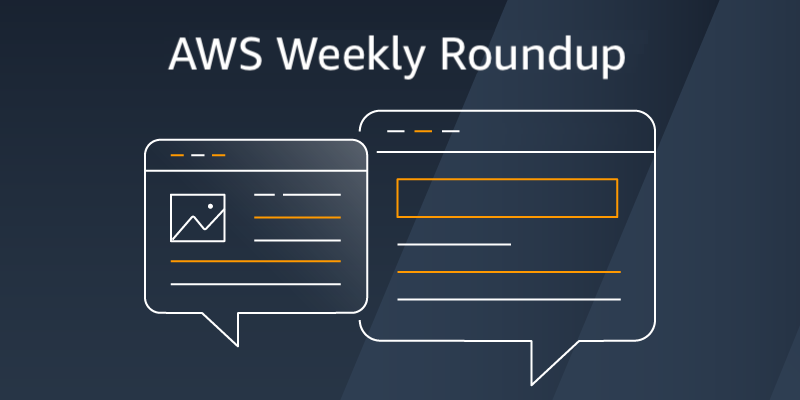AWS News Blog
Agents for Amazon Bedrock: Introducing a simplified creation and configuration experience
With Agents for Amazon Bedrock, applications can use generative artificial intelligence (generative AI) to run tasks across multiple systems and data sources. Starting today, these new capabilities streamline the creation and management of agents: Quick agent creation – You can now quickly create an agent and optionally add instructions and action groups later, providing flexibility […]
Import custom models in Amazon Bedrock (preview)
With Amazon Bedrock, you have access to a choice of high-performing foundation models (FMs) from leading artificial intelligence (AI) companies that make it easier to build and scale generative AI applications. Some of these models provide publicly available weights that can be fine-tuned and customized for specific use cases. However, deploying customized FMs in a […]
Run large-scale simulations with AWS Batch multi-container jobs
Industries like automotive, robotics, and finance are increasingly implementing computational workloads like simulations, machine learning (ML) model training, and big data analytics to improve their products. For example, automakers rely on simulations to test autonomous driving features, robotics companies train ML algorithms to enhance robot perception capabilities, and financial firms run in-depth analyses to better […]
AWS Weekly Roundup — New models for Amazon Bedrock, CloudFront embedded POPs, and more — March 4, 2024
This has been a busy week – we introduced a new kind of Amazon CloudFront infrastructure, more efficient ways to analyze data stored on Amazon Simple Storage Service (Amazon S3), and new generative AI capabilities. Last week’s launches Here’s what got my attention: Amazon Bedrock – Mistral AI’s Mixtral 8x7B and Mistral 7B foundation models […]
DNS over HTTPS is now available in Amazon Route 53 Resolver
Starting today, Amazon Route 53 Resolver supports using the DNS over HTTPS (DoH) protocol for both inbound and outbound Resolver endpoints. As the name suggests, DoH supports HTTP or HTTP/2 over TLS to encrypt the data exchanged for Domain Name System (DNS) resolutions. Using TLS encryption, DoH increases privacy and security by preventing eavesdropping and […]
Upgrade your Java applications with Amazon Q Code Transformation (preview)
As our applications age, it takes more and more effort just to keep them secure and running smoothly. Developers managing the upgrades must spend time relearning the intricacies and nuances of breaking changes and performance optimizations others have already discovered in past upgrades. As a result, it’s difficult to balance the focus between new features […]
Announcing throughput increase and dead letter queue redrive support for Amazon SQS FIFO queues
With Amazon Simple Queue Service (Amazon SQS), you can send, store, and receive messages between software components at any volume. Today, Amazon SQS has introduced two new capabilities for first-in, first-out (FIFO) queues: Maximum throughput has been increased up to 70,000 transactions per second (TPS) per API action in selected AWS Regions, supporting sending or […]
Replication failback and increased IOPS are new for Amazon EFS
Today, Amazon Elastic File System (Amazon EFS) has introduced two new capabilities: Replication failback – Failback support for EFS replication makes it easier and more cost-effective to synchronize changes between EFS file systems when performing disaster recovery (DR) workflows. You can now quickly replicate incremental changes from your secondary back to your primary file system […]








